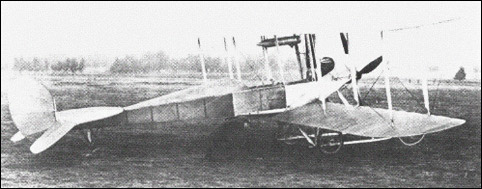| Anonymous, 03.12.2021 16:47 In the photo at the top of this page that is the famous British aircraft designer Geoffrey de Havilland visible kneeling beneath the fuselage of the B.E.1. At that time de Havilland was one of the chief aircraft designers at the R.A.F. and he designed the B.E.1 and its' successor, the B.E.2. de Havilland later left the R.A.F. to design many WW-I aircraft for AIRCO including the famous DH-4. After WW-I de Havilland formed his own aircraft company which produced such famous aircraft as the Tiger Moth trainer, Mosquito multi-role combat aircraft, Vampire jet fighter and Comet jet airliner. reply |
| Alan, e-mail, 12.11.2010 02:32 Found this info on the web.
The Royal Aircraft Factory B.E.1 was the first tractor biplane to be designed by Geoffrey de Havilland, and was the immediate predecessor of the B.E.2 and its variants, the mainstay of the early R.F.C.
In 1911 the newly renamed His Majesty's Aircraft Factory didn't have permission to design new aircraft. Its supervisor, Mervyn O'Gorman, got around this restriction by disguising new aircraft as repaired versions of older aircraft, first with the S.E.1, which was officially a slightly modified version of a damaged Blériot.
In May 1911 the Duke of Westminster donated an obsolete Voisin pusher to the War Office. This aircraft was soon badly damaged in a crash, and on 11 July was sent to the Aircraft Factory for repairs. On 1 August O'Gorman reported that the wings needed to be replaced and that the controls were unfamiliar. He was given permission to modify the aircraft so that it could be flown by anyone who was familiar with a Farman aircraft (another pusher).
O'Gorman's ruse can't have fooled many people. When the B.E.1 emerged later in the year the only thing it had in common with the original Voisin was its 60hp Wolseley engine. The 'slightly modified' B.E.1 was a two-bay tractor biplane, with a fabric covered fuselage, an ear-shaped rudder and a large tailplane. The B.E.1 could carry a pilot and a passenger in its single two-seat cockpit, with the pilot at the rear and the passenger close to the centre of gravity.
The new aircraft had been designed by Geoffrey de Havilland. He was also the Factory's test pilot, and on 4 December 1911 he piloted the B.E.1 on its maiden flight.
At this date the Aircraft Factory gave a new number to each aircraft it produced, so the series of development aircraft that followed the B.E.1 were designated as the B.E.2 to B.E.7, despite being very similar to the original. This system changed when the aircraft was ordered into production, with each new model being distinguished by a suffix, starting with the B.E.2a.
The B.E.1 was the first Factory aircraft to have silencers in the exhaust pipes, and it quickly became known as the 'Silent Army Aeroplane'. The Factory continued to work on it for three months after its maiden flight, making a series of minor adjustments, before on 11 March 1912 it was handed over the Captain Burke of the Air Battalion. Three days later, on 14 March, the B.E.1 was given what is generally acknowledged as the first Certificate of Airworthiness.
The B.E.1 was returned to the Factory for repairs and modifications on a number of occasions. Its Wolseley engine was replaced by a Renault similar to the model used in the B.E.2. Fuselage decking was added ahead and behind the cockpit and it was given a standard B.E.2 tailplane. The aircraft didn't go to France in 1914, and eventually fades from view after a last mention in July 1916, when it had been rebuilt to resemble a B.E.2b and was being used by the Central Flying School (One could argue that this wasn't really the original B.E.1 any more, having had its fuselage, engine and wings replaced at least once).
Engine: Wolseley V-8
Power: 60hp
Crew: 2
Wing span: 38ft 7.5in upper, 34ft 11.5in lower
Length: 29ft 6.5in
Height: 10ft 2in
Weights:
Max Speed: 59mph at sea level
Min Speed: 42mph
Climb rate: 155ft /min to 600ft reply |











